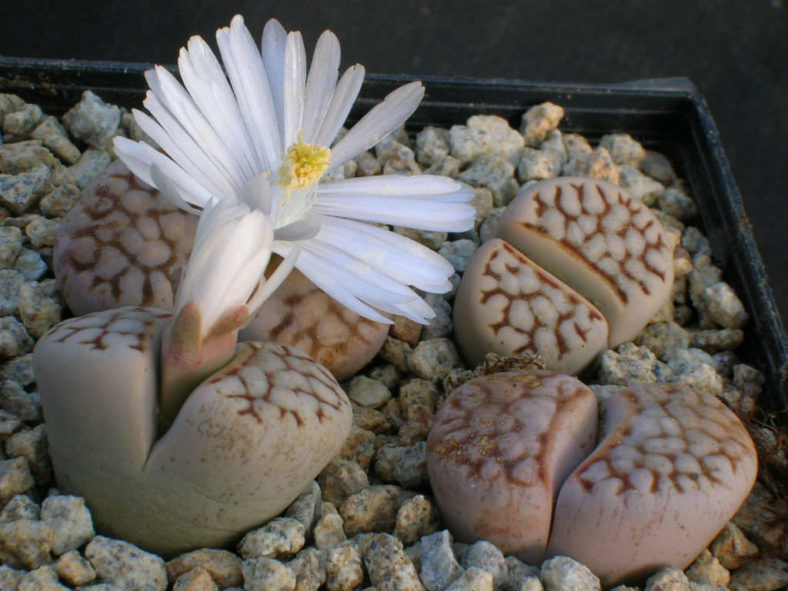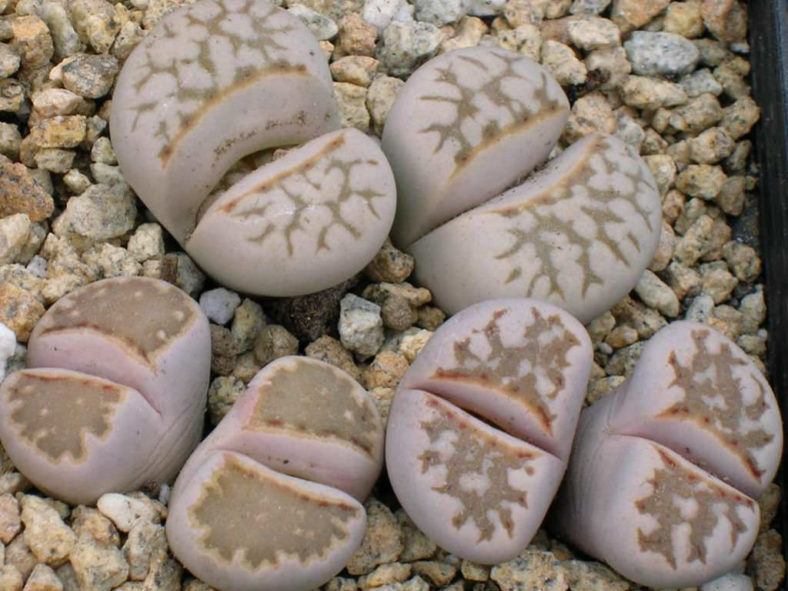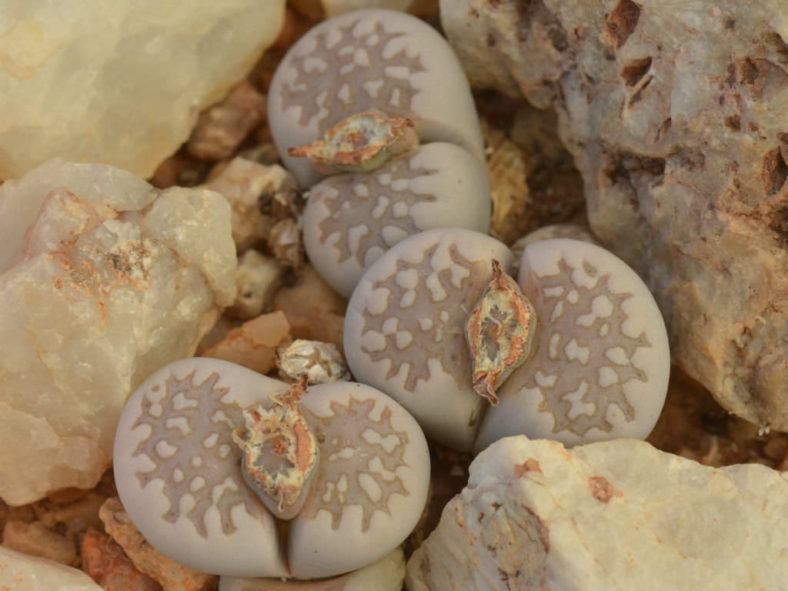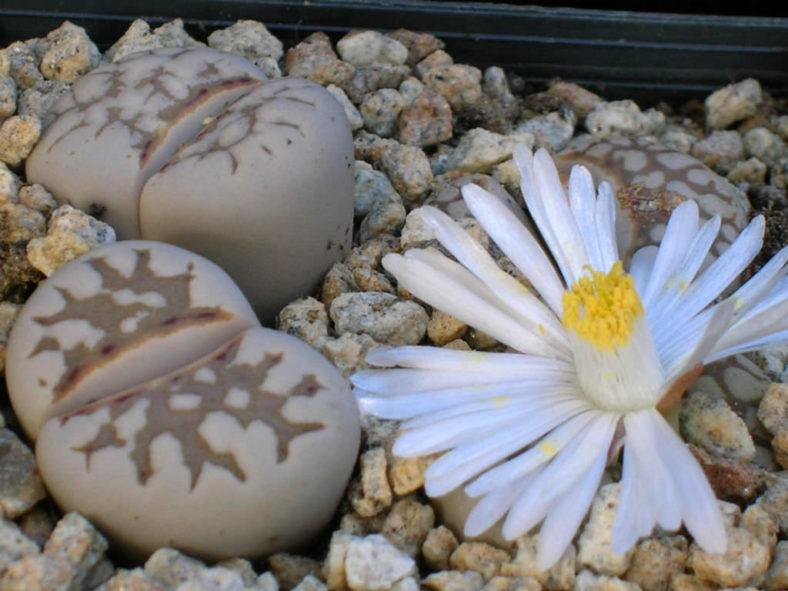Scientific Name
Lithops julii (Dinter & Schwant.) N. E. Br.
Common Name(s)
Living Stones
Synonym(s)
Lithops julii subsp. julii, Mesembryanthemum julii
Scientific Classification
Family: Aizoaceae
Subfamily: Ruschioideae
Tribe: Ruschieae
Genus: Lithops
Etymology
The specific epithet "julii (JOO-lee-eye)" honors Dr. Julius Derenberg, a succulent grower and friend of Moritz Kurt Dinter (1868-1945), a German botanist who first collected this species in 1924.
Origin
Lithops julii is native to Namibia (found west of Warmbad).
Description
Lithops julii is a dwarf succulent with cone-shaped bodies consisting of two gray to pinkish-grey leaves with usually brown impressed markings on the upper surface. It can grow solitary or form clumps of up to 15 bodies. The top near the fissure edge often has rubrications, creating a "lip smear," a distinctive feature of this species. The leaves are thick, fleshy, and flat to slightly convex at the top. The bodies can grow up to 1 inch (2.5 cm) tall, with the upper surface up to 1.2 inches (3 cm) long and up to 0.8 inches (2 cm) wide.
The white flowers are daisy-like and appear from mid-summer into fall from the fissure between leaves. They can reach up to 1.2 inches (3 cm) in diameter.

How to Grow and Care for Lithops julii
Light: Lithops have adapted to intense sunlight in the wild, requiring a good amount of direct sunlight when grown indoors. If L. julii does not receive enough sunlight, it will begin to grow slender and elongated and lose coloration.
Soil: This plant thrives best in a growing medium that will drain quickly. Use a commercial succulent soil mix or make your own potting mix.
Hardiness: High temperatures are not a problem for Lithops as long as there is plenty of fresh air, but they are not cold-hardy succulents. L. julii can withstand temperatures as low as 30 to 50 °F (-1.1 to 10 °C), USDA hardiness zones 10a to 11b.
Watering: Lithops have a specific yearly growth cycle, and it is important to water only during certain stages, but it is also important to keep the soil dry at other stages of their growth. Never water L. julii deeply when it is dormant.
Fertilizing: L. julii does not need to be fertilized. It will thrive without any feeding. If you feed, use a high potassium and low nitrogen levels fertilizer.
Repotting: This small succulent will stay in the same pot for several decades. The common reason for repotting is to divide the plant or to allow space for clusters to grow. Repot only when its growing season starts.
Propagation: Lithops are most often grown from seeds. If you have a multi-headed plant, L. julii can also be propagated by division.
Learn more at How to Grow and Care for Lithops.
Toxicity of Lithops julii
Lithops are non-toxic and safe to have around children and pets.
Subspecies and Forms of Lithops julii
Links
- Back to genus Lithops
- Succupedia: Browse succulents by Scientific Name, Common Name, Genus, Family, USDA Hardiness Zone, Origin, or cacti by Genus
Photo Gallery
Click on a photo to see a larger version.


